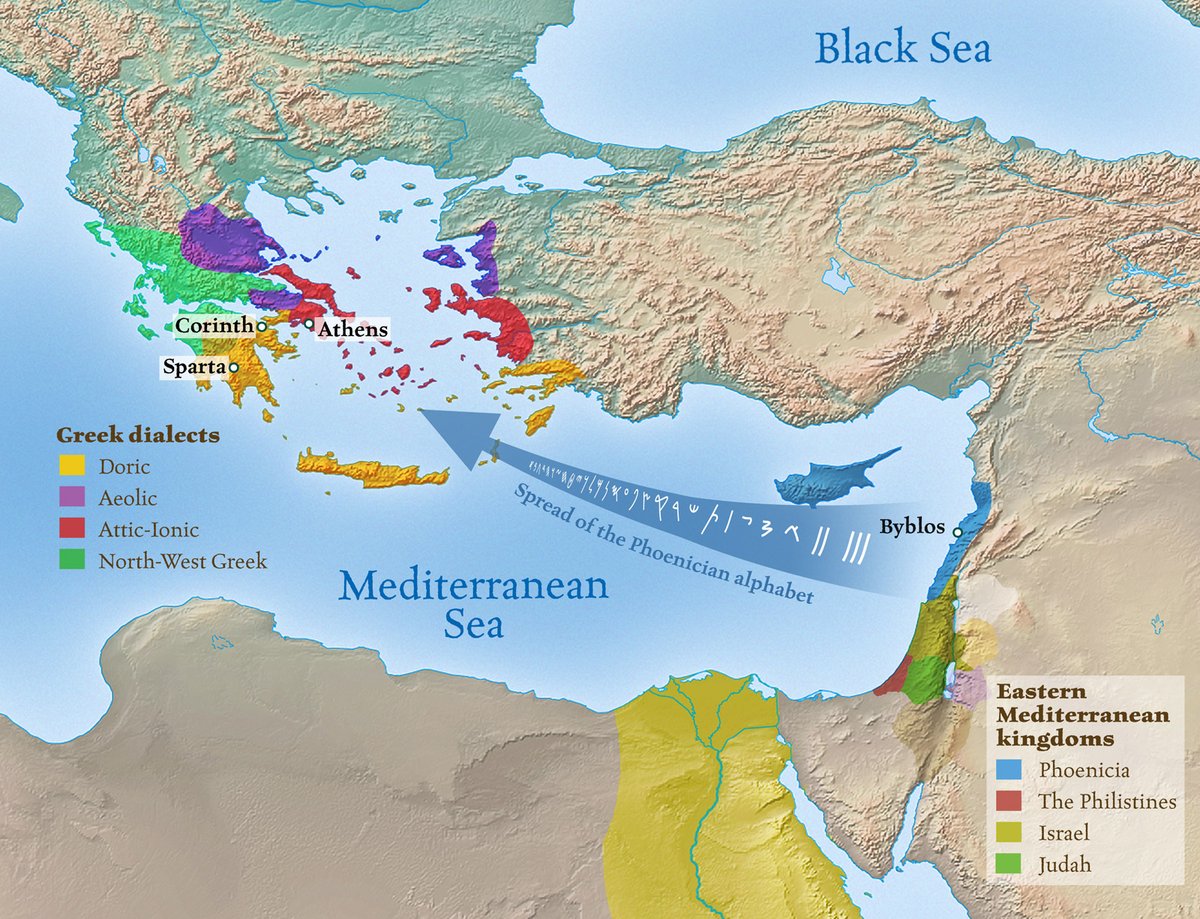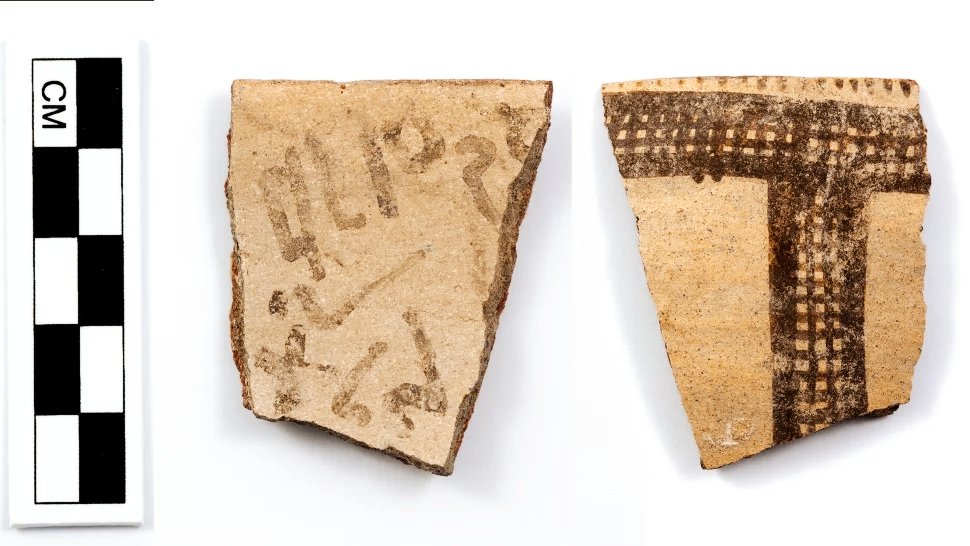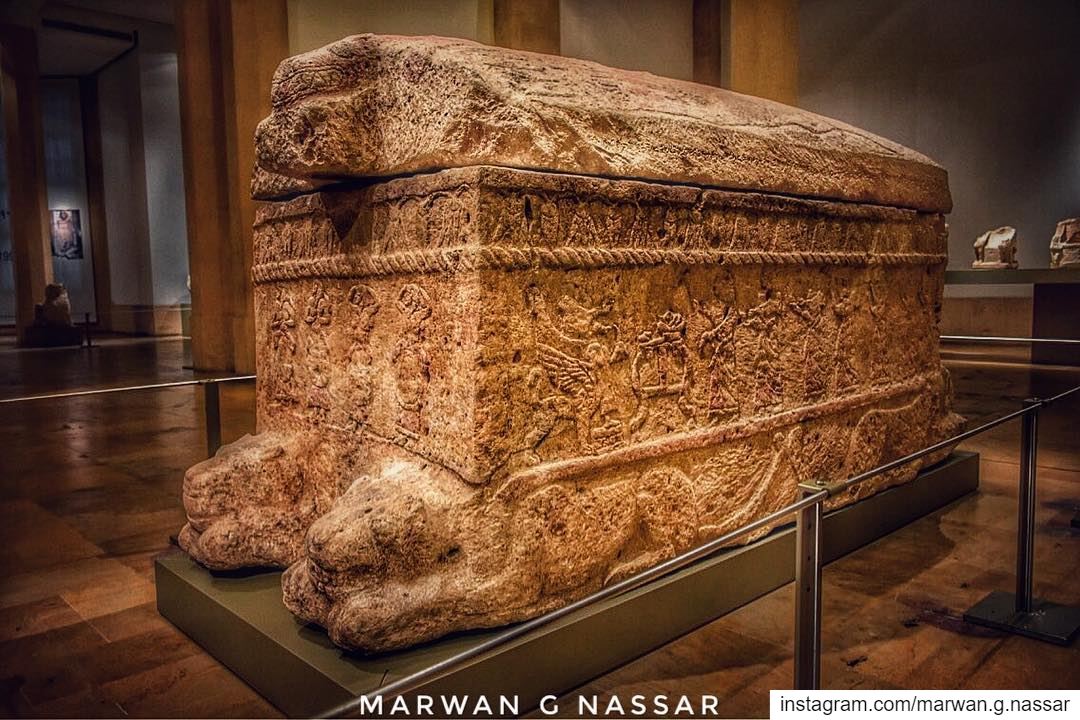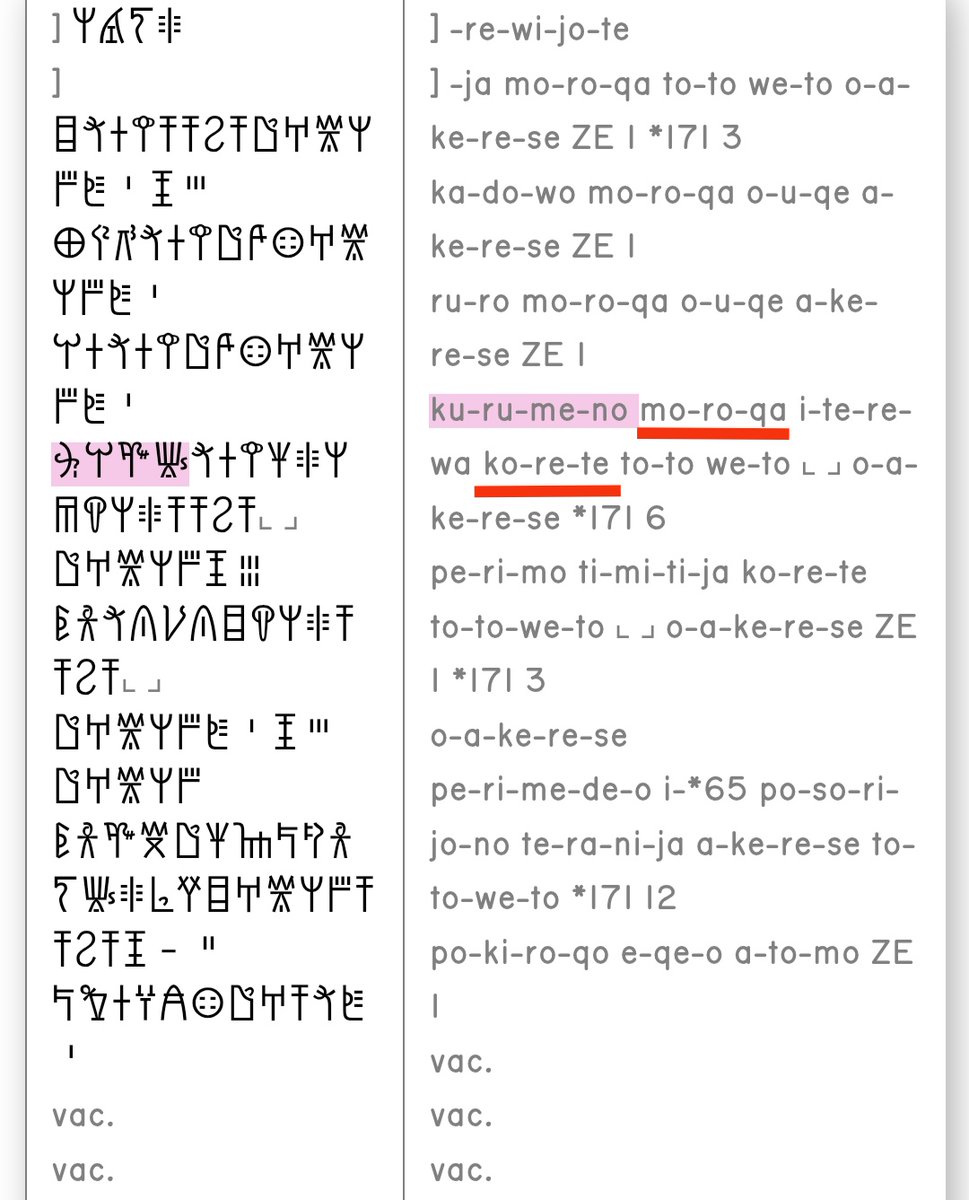1/ Around the middle of the 11th century BC, the first attempts to create an easy-to-use alphabetic writing system that captures the rich Greek language, based on the Phoenician alphabet, begin. ➡️ 

➡️ At the end of the 9th century BC the local Greek scripts crystallize and begin to be used en masse, having a private character as well. 

2/ The first question that comes to mind is when and from where began this exciting journey of the creation of the alphabet that contributed so effectively to the flowering of the Greek spirit and European culture in general. 

3/ The archaeological and linguistic data demonstrate that the Phoenician alphabet was the last stage of a long-term effort within the Western branch of Semitic languages for the acquiring a simple writing system. 

4/ Everything seems to have started at the beginning of the 2nd millennium BC in the Levantine coastal city of Byblos, which at the time was an Egyptian colony, having an easily accessible port from which local ships loaded with timber bound for Egypt departed. 

5/ In Byblos, therefore, a corpus of few undeciphered inscriptions written in a script characterized as pseudo - hieroglyphic and which consists of a set of about 200 signs has been found. 



7/ A little later appear in the area of Palestine (Gezer, Shechem and Lachish) some separate inscriptions written in a script that indicates a new attempt to create an alphabet and which is called Old Palestinian. 

8/ However, the most successful attempt to develop writing takes place in the 15th cent BC –perhaps even earlier– in the Sinai, where in the Serabit el-Khadim dozens of inscriptions were found on cult objects within the Temple of Hathor and on walls of the nearby turquoise mines. 

9/ The inscriptions are written in the so-called Proto-Sinaitic script and are of great interest, because for the first time we have a script, which consists of a limited number of signs, ➡️ 

➡️ reflects a dialect of the Western Semitic group of languages and above all each sign represents one and only consonant. 

10/ In the 1990s, a couple of American Egyptologists discovered at the Wadi el-Hôl in the coastal desert west of the Nile two inscriptions carved into limestone rocks that bore a script that had similarities with the inscriptions in Sinai and Palestine. 

11/ The inscriptions were found in an archaeological environment of West Semitic habitation and gave a very early dating around 1800 BC, ➡️ 

➡️ demonstrating the influence of Egyptian hieroglyphics in the formation of early alphabetic letters and at the same time, a much earlier start of the process of forming an alphabet. 

12/ Moving forward in time, we reach the 14th century BC. and in Ugarit, where a cuneiform alphabetic script with a set of 30 signs appears, which captures one of the dialects of the Canaanite language. 



13/ Thus, we arrive at the earliest Phoenician alphabetic text, the sarcophagus inscription of Ahiram, king of Byblos, which is followed chronologically by the inscription of Yehimilk from Byblos. The question is when Ahiram's inscription was written. 

14/ The majority of scholars date this particular inscription around 1000 BC, so the Phoenician alphabet must have had taken its final form already in 1050 BC, without being subject to any radical change for the following centuries. 

15/ In this scenario the Phoenician alphabet came from the Proto-Canaanic or Canaanite scripts, which also includes Proto-Sinaitic with a crucial transitional role being played by the cuneiform alphabetic script of Ugarit. ➡️ 

➡️ Here we must point out that the discovery of an inscribed silver bowl from the Cypriot site of Hala Sultan Tekké which bears an inscription in cuneiform alphabetic script and dates to around 1180 BC indicates a persistence of the use of that particular script. 



16/ An inscribed sherd from Izbet Sartah (12th/11th century BC) and an inscription from Qubur el-Walaydah (11th century BC) play an enigmatic role in the evolution of the Phoenician alphabet. ➡️ 

➡️ Their importance lies in the fact that they display an archaic Phoenician script, while on the other hand they have been found within a Philistine cultural environment. 

17/ Both inscriptions have as their main characteristic the writing direction from left to right, a rare phenomenon for Phoenician, while both in the way of writing and in the form of the letters they bear great similarities with the earliest Greek texts. 

18/ In 2005 an inscribed ceramic sherd was found in the Philistine city of Gath, dating to the 10th – mid 9th century BC and bears the inscription: .lwt / wlt[ (two non-Semitic names), having the same characteristics as the aforementioned inscriptions. 



19/ Maybe was there a Philistine alphabetic script, distinct from the rest of the West Semitic languages, which played a crucial role in the transfer of an early form of the Phoenician alphabet to the Aegean area as early as the 11th century BC?
TO BE CONTINUED...
TO BE CONTINUED...

• • •
Missing some Tweet in this thread? You can try to
force a refresh

























